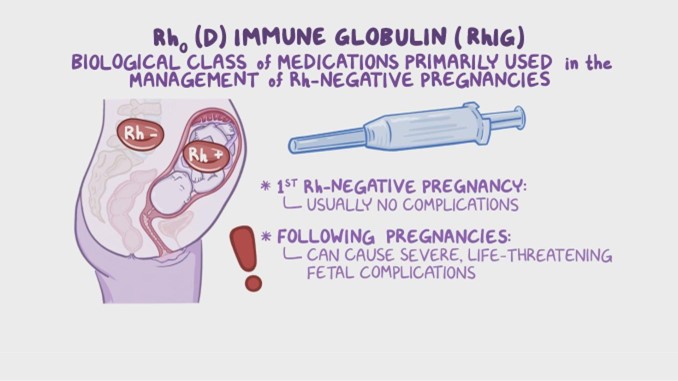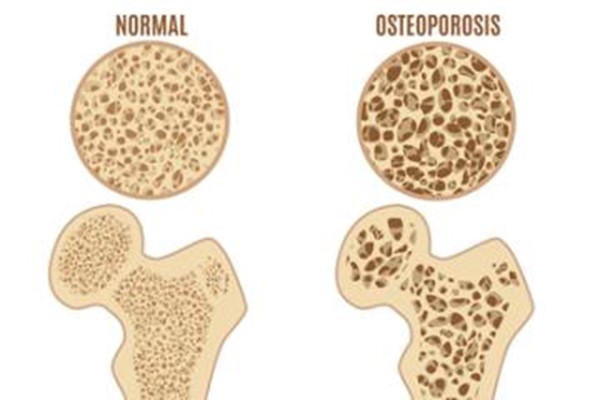A nurse is teaching a pregnant client who is Rh-negative about Rh(D) immune globulin. Which of the following statements by the client indicates an understanding of the teaching?
"If my partner is Rh-negative, I will not receive the shot.”
"I will receive the shot after delivery if my baby is Rh-negative.”
"I should not receive any immunizations for 3 months after the shot.”
"This shot may be given after birth to protect future pregnancies.”
The Correct Answer is D
Choice A rationale:
This statement is incorrect. The client should receive Rh(D) immune globulin (RhoGAM) if they are Rh-negative and their partner's Rh status is unknown or Rh-positive. This prevents the development of Rh antibodies in the mother's blood, which could be harmful in future pregnancies if the baby is Rh-positive.
Choice B rationale:
This statement is incorrect. Rh(D) immune globulin is administered to an Rh-negative mother within 72 hours after delivery if the baby is Rh-positive. This is done to prevent the mother from developing Rh antibodies that could affect subsequent pregnancies.
Choice C rationale:
This statement is incorrect. There is no restriction on receiving other immunizations after receiving Rh(D) immune globulin. The shot only protects against Rh incompatibility and does not interfere with other immunizations.
Choice D rationale:

This statement is correct. Rh(D) immune globulin can be given after birth to an Rh-negative mother with an Rh-positive baby. This helps protect the mother's future pregnancies from the potential harmful effects of Rh incompatibility.
Nursing Test Bank
Naxlex Comprehensive Predictor Exams
Related Questions
Correct Answer is B
Explanation
Choice A rationale:
Hyporeactivity, or reduced responsiveness to stimuli, is not typically associated with neonatal abstinence syndrome (NAS) NAS is characterized by increased irritability and not reduced activity.
Choice B rationale:
An excessive high-pitched cry is a common manifestation of neonatal abstinence syndrome. Infants exposed to substances like methadone during pregnancy may experience heightened sensitivity and exhibit a high-pitched cry as a sign of withdrawal.
Choice C rationale:
Acrocyanosis, a bluish discoloration of the hands and feet, is not a specific indicator of neonatal abstinence syndrome. It is a common finding in newborns and often resolves on its own.
Choice D rationale:
A respiratory rate of 50/min is within the normal range for a newborn. It is not an indication of neonatal abstinence syndrome.
Correct Answer is C
Explanation
Choice A rationale:
Raloxifene is not used to treat migraines. It is a selective estrogen receptor modulator (SERM) that primarily acts on bone tissues, estrogen receptors, and has anti-estrogenic effects in the breast, which may reduce the risk of breast cancer.
Choice B rationale:
Raloxifene is not used to treat hypertension (high blood pressure) It is primarily indicated for the prevention and treatment of osteoporosis in postmenopausal women.
Choice C rationale:

This is the correct choice. Raloxifene is indicated for the treatment and prevention of osteoporosis in postmenopausal women. It helps increase bone density and reduces the risk of fractures associated with osteoporosis.
Choice D rationale:
Raloxifene is not used to treat heart disease. While it may have some cardiovascular benefits due to its effects on cholesterol levels, it is not a primary medication for heart disease management.
Whether you are a student looking to ace your exams or a practicing nurse seeking to enhance your expertise , our nursing education contents will empower you with the confidence and competence to make a difference in the lives of patients and become a respected leader in the healthcare field.
Visit Naxlex, invest in your future and unlock endless possibilities with our unparalleled nursing education contents today
Report Wrong Answer on the Current Question
Do you disagree with the answer? If yes, what is your expected answer? Explain.
Kindly be descriptive with the issue you are facing.
